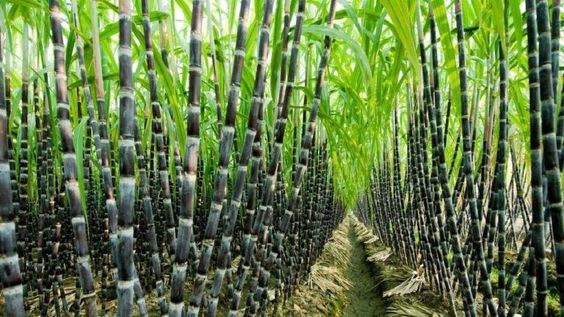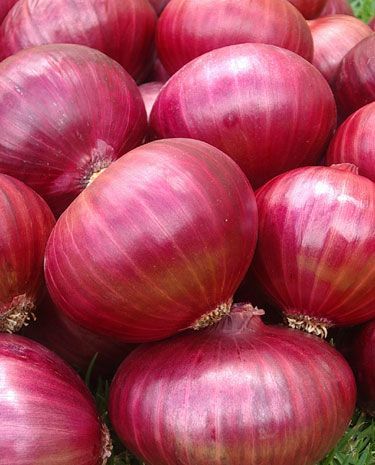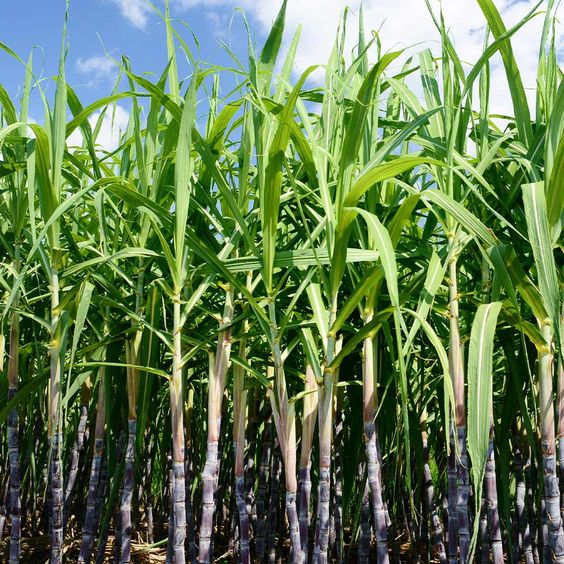Sugarcane Derivatives: A Comprehensive Overview of Their Industrial Significance and Applications
Sugarcane Derivatives is a versatile crop that serves as a cornerstone of the agricultural sector in many countries, particularly in tropical and subtropical regions. While its primary use is in sugar production, sugarcane offers a wide array of derivatives, including ethanol, molasses, bagasse, and bioenergy, each with significant industrial applications. The traditional methods of cultivating and processing sugarcane, while effective, often lead to inefficiencies, resource wastage, and environmental challenges.
Contents
- 1 Comprehensive Overview of Sugarcane Derivatives
- 2 The Role of Smart Agriculture in Enhancing Sugarcane Derivatives Production
- 3 The Wide-Ranging Benefits of Smart Agriculture in Sugarcane Derivatives Production
- 4 Objectives of Implementing Smart Agriculture in Sugarcane Derivatives Production
- 5 Practical Applications of Smart Agriculture in Sugarcane Derivatives Production
- 6 The Future of Sugarcane Derivatives Production with Smart Agriculture
- 7 Challenges and Solutions in Implementing Smart Agriculture for Sugarcane Derivatives
Comprehensive Overview of Sugarcane Derivatives
Sugarcane derivatives are a diverse group of products that play vital roles across multiple industries, ranging from food and beverage to energy and manufacturing. These derivatives are produced through various processes that extract and transform the components of sugarcane into valuable resources. A comprehensive understanding of sugarcane derivatives reveals their significance and widespread applications in modern economies.
Sugar is the most prominent derivative of sugarcane, recognized worldwide for its use in food and beverages. The production of sugar involves the extraction of sucrose from sugarcane juice, followed by a crystallization process that yields the final product. Sugar is a staple ingredient in households and is essential for commercial food production, where it is used to sweeten, preserve, and enhance the flavor of various foods and beverages. Beyond its culinary uses, sugar also serves in the pharmaceutical industry, where it is utilized in the formulation of syrups and medications. Its versatility and widespread availability make it one of the most valuable sugarcane derivatives.
Ethanol is another critical derivative of sugarcane, produced through the fermentation of sugarcane juice or molasses. Ethanol has gained prominence as a sustainable biofuel that offers an alternative to conventional fossil fuels. In the energy sector, ethanol is blended with gasoline to create biofuels, reducing the environmental impact of transportation. The use of ethanol in vehicles contributes to lower carbon emissions and decreases the dependence on oil reserves. In addition to its role as a biofuel, ethanol is utilized in the production of alcoholic beverages, where it serves as the primary alcohol component in spirits and liquors. Ethanol’s antiseptic properties also make it a valuable ingredient in hand sanitizers and disinfectants, especially in healthcare settings.
Molasses is a thick, dark syrup that results as a by-product of sugar production. Despite being a secondary product, molasses is rich in nutrients and has a wide range of applications. In the animal feed industry, molasses is valued for its high energy content and is often added to livestock feed to enhance nutritional value and palatability. Additionally, molasses plays a significant role in fermentation processes, particularly in the production of rum and other alcoholic beverages. Its natural sweetness also makes it a popular ingredient in baking and cooking, where it is used to add depth of flavor to various recipes. Furthermore, molasses is used as a raw material in the production of industrial alcohol and other chemical products.
Bagasse is the fibrous residue left after the extraction of juice from sugarcane. This by-product is not merely waste but a valuable resource used in several industries. Bagasse is commonly used as a biofuel for power generation, particularly in sugar mills, where it provides a renewable energy source that reduces reliance on fossil fuels. The combustion of bagasse produces steam, which is used to generate electricity and power the mill’s operations.
Bioenergy produced from sugarcane derivatives, particularly bagasse, is a significant contributor to renewable energy. The combustion of bagasse and other sugarcane residues generates bioenergy, which is used to produce electricity and heat. This form of energy is considered carbon-neutral, as the carbon dioxide released during combustion is offset by the carbon dioxide absorbed by the sugarcane during its growth. Bioenergy from sugarcane helps lower greenhouse gas emissions, making it a crucial component in efforts to combat climate change. The adoption of bioenergy in sugar-producing regions has also led to energy independence and economic benefits, as it reduces the need for imported fossil fuels.

The Role of Smart Agriculture in Enhancing Sugarcane Derivatives Production
Smart Agriculture integrates advanced technologies into the agricultural process to optimize resource use, improve crop yields, and enhance the efficiency of derivative production. In the context of sugarcane derivatives, Smart Agriculture plays a crucial role in several areas:
Precision Farming for Yield Optimization
Precision farming involves the use of technology to monitor and manage agricultural activities with unprecedented accuracy. For sugarcane cultivation, this means optimizing planting, irrigation, fertilization, and pest control to ensure maximum crop yield. By using GPS-guided machinery, drones, and soil sensors, farmers can tailor their practices to the specific needs of their crops, resulting in healthier plants and higher yields. This, in turn, leads to increased production of sugarcane derivatives such as ethanol and molasses.
Resource Management and Sustainability
Efficient resource management is a key component of Smart Agriculture. In sugarcane farming, this involves the use of smart irrigation systems that monitor soil moisture levels and adjust water application accordingly. These systems reduce water waste and ensure that crops receive the right amount of water at the right time, promoting healthy growth and minimizing environmental impact. Additionally, the use of renewable energy sources, such as bioenergy from bagasse, supports sustainable farming practices and reduces the carbon footprint of sugarcane processing.
Data-Driven Decision Making
The collection and analysis of data are at the heart of Smart Agriculture. By gathering data on weather patterns, soil conditions, crop growth, and market trends, farmers and processors can make informed decisions that enhance the efficiency of their operations. Predictive analytics can forecast potential issues, such as pest infestations or adverse weather conditions, allowing for proactive measures to be taken. This data-driven approach ensures a consistent supply of high-quality sugarcane derivatives, meeting market demands and improving profitability.
Automation and Mechanization
Automation and mechanization are transforming the sugarcane industry by reducing labor costs and increasing operational efficiency. Automated harvesting technologies, such as GPS-guided harvesters, ensure that sugarcane is harvested at its peak maturity with minimal loss. This not only improves the quality of the raw material but also enhances the overall efficiency of the processing stage, leading to higher yields of sugarcane derivatives.
The Wide-Ranging Benefits of Smart Agriculture in Sugarcane Derivatives Production
The integration of Smart Agriculture into sugarcane farming and derivative production brings numerous benefits, including:
Increased Productivity and Yield
Smart Agriculture techniques, such as precision farming and automated harvesting, significantly increase the productivity of sugarcane farms. By optimizing every aspect of the cultivation process, from planting to harvesting, farmers can achieve higher yields, which translates into more raw material for derivative production. This increase in productivity is crucial for meeting the growing global demand for sugarcane derivatives, particularly in the biofuel and renewable energy sectors.
Environmental Sustainability
Sustainability is a critical concern in modern agriculture, and Smart Agriculture addresses this by promoting environmentally friendly practices. The use of precision irrigation reduces water wastage, while the integration of renewable energy sources, such as bioenergy from bagasse, minimizes the carbon footprint of sugarcane processing. Additionally, precision farming techniques reduce the need for chemical inputs, such as fertilizers and pesticides, lowering the environmental impact of sugarcane cultivation.
Cost-Effectiveness and Profitability
Smart Agriculture enhances the cost-effectiveness of sugarcane farming by reducing resource wastage and improving operational efficiency. Automated systems reduce labor costs, while precision farming minimizes the need for expensive inputs. These cost savings directly impact the profitability of sugarcane farming and derivative production, making it a more viable and attractive option for farmers and investors alike.
Improved Quality and Consistency
The application of Smart Agriculture technologies ensures that sugarcane is cultivated and harvested under optimal conditions, leading to higher quality raw material. This results in derivatives, such as ethanol and molasses, that are of consistent quality, meeting industry standards and consumer expectations. Improved quality control also enhances the competitiveness of sugarcane derivatives in the global market.
Objectives of Implementing Smart Agriculture in Sugarcane Derivatives Production
The objectives of integrating Smart Agriculture into sugarcane derivatives production are multifaceted, focusing on enhancing productivity, sustainability, and profitability. Key objectives include:
Maximizing Yield and Efficiency
The primary objective of Smart Agriculture is to maximize the yield of sugarcane crops and the efficiency of derivative production. By using advanced technologies to optimize each stage of the agricultural process, from planting to processing, Smart Agriculture aims to increase the output of sugarcane derivatives while minimizing resource use and waste.
Promoting Sustainable Farming Practices
Sustainability is at the core of Smart Agriculture. The objective is to promote farming practices that conserve natural resources, reduce environmental impact, and ensure the long-term viability of sugarcane cultivation. This includes the use of precision irrigation, renewable energy sources, and data-driven decision-making to minimize the ecological footprint of sugarcane farming.
Enhancing Economic Viability and Profitability
Smart Agriculture aims to enhance the economic viability of sugarcane farming by reducing costs, increasing yields, and improving the quality of derivatives. By making sugarcane farming more profitable, Smart Agriculture supports the economic stability of farming communities and contributes to the growth of the sugarcane derivatives industry.
Ensuring Market Competitiveness
In a globalized market, competitiveness is crucial for the success of any agricultural product. Smart Agriculture enhances the market competitiveness of sugarcane derivatives by ensuring consistent quality, improving traceability, and reducing production costs. These factors make sugarcane derivatives more attractive to consumers and industries, both locally and internationally.
Practical Applications of Smart Agriculture in Sugarcane Derivatives Production
Smart Agriculture technologies have numerous practical applications in the production of sugarcane derivatives, including:
Precision Irrigation Systems
Smart irrigation systems are designed to optimize water use in sugarcane farming. These systems use soil moisture sensors and weather data to determine the precise amount of water needed by the crops, reducing water waste and ensuring optimal growing conditions. The result is healthier sugarcane plants and higher yields, which directly impact the production of derivatives such as ethanol and molasses.
Automated Harvesting Equipment
Automated harvesting equipment, such as GPS-guided harvesters, plays a crucial role in ensuring that sugarcane is harvested at the right time and with minimal loss. These machines are capable of operating with high precision, reducing the risk of damage to the crop and ensuring that the harvested sugarcane is of the highest quality. This precision in harvesting is essential for maintaining the quality and consistency of sugarcane derivatives.
IoT-Enabled Monitoring and Analytics
The Internet of Things (IoT) enables real-time monitoring of various aspects of sugarcane farming, including soil health, crop growth, and environmental conditions. IoT devices collect data that is then analyzed to provide actionable insights, helping farmers make informed decisions about planting, irrigation, fertilization, and pest control. This data-driven approach ensures that sugarcane is grown under optimal conditions, leading to higher yields and better quality derivatives.
Renewable Energy Integration
The integration of renewable energy sources, such as bioenergy from sugarcane bagasse, is a key application of Smart Agriculture. By utilizing the by-products of sugarcane processing as a source of energy, farmers and processors can reduce their reliance on fossil fuels, lower their energy costs, and contribute to a more sustainable agricultural system. This practice not only supports the environmental objectives of Smart Agriculture but also enhances the profitability of sugarcane farming.
The Future of Sugarcane Derivatives Production with Smart Agriculture
The future of sugarcane derivatives production is closely tied to the continued development and adoption of Smart Agriculture technologies. As the global demand for sustainable and renewable products increases, the sugarcane industry is poised to play a critical role in meeting these demands. Key trends and future prospects include:
Advances in Biotechnology and Genetic Engineering
Biotechnology and genetic engineering hold significant potential for enhancing sugarcane production. The development of genetically modified sugarcane varieties that are more resistant to pests, diseases, and environmental stressors could lead to higher yields and improved quality of sugarcane derivatives. These advancements will complement the existing Smart Agriculture technologies, further increasing the efficiency and sustainability of sugarcane farming.
Expansion of Renewable Energy Applications
The use of sugarcane derivatives, particularly bioenergy, is expected to expand as the world transitions towards renewable energy sources. The sugarcane industry has the potential to become a major player in the global bioenergy market, with Smart Agriculture technologies ensuring that this potential is fully realized. The continued integration of bioenergy production with sugarcane farming will not only support environmental sustainability but also provide a valuable source of revenue for farmers.
Enhanced Market Opportunities and Global Trade
As consumer demand for sustainable products grows, sugarcane derivatives are likely to see increased demand in global markets. Smart Agriculture technologies will enable farmers to meet this demand by producing high-quality, consistent, and traceable sugarcane derivatives. The ability to demonstrate sustainability and quality through data-driven practices will enhance market opportunities and support the growth of the sugarcane derivatives industry in international trade.
Continued Innovation and Research
Ongoing research and innovation are essential for the continued success of Smart Agriculture in sugarcane derivatives production. As new technologies and practices are developed, they will be integrated into existing systems, further enhancing the efficiency, sustainability, and profitability of sugarcane farming. Collaboration between researchers, farmers, and industry stakeholders will be crucial in driving these innovations and ensuring that the sugarcane industry remains at the forefront of agricultural advancements.
The integration of Smart Agriculture into sugarcane derivatives production marks a significant step forward for the industry. By leveraging advanced technologies, farmers and processors can enhance the efficiency, sustainability, and profitability of sugarcane farming, while also meeting the growing global demand for high-quality derivatives. As the industry continues to evolve, the adoption of Smart Agriculture will play a critical role in shaping the future of sugarcane derivatives, ensuring that they remain a vital and sustainable resource for years to come.

Challenges and Solutions in Implementing Smart Agriculture for Sugarcane Derivatives
While the potential benefits of Smart Agriculture in sugarcane derivatives production are substantial, the transition to these advanced technologies is not without challenges. Addressing these challenges is crucial for the successful adoption and integration of Smart Agriculture across the sugarcane industry.
Technological Barriers and Infrastructure Requirements
Challenge:
The implementation of Smart Agriculture requires significant technological infrastructure, including IoT devices, precision farming equipment, and data analytics platforms. In many sugarcane-growing regions, particularly in developing countries, access to this technology is limited due to inadequate infrastructure and high costs.
Solution:
Investments in rural infrastructure, such as reliable internet connectivity and electricity, are essential for enabling the widespread adoption of Smart Agriculture. Public-private partnerships can play a key role in financing these investments, while government subsidies and grants can help lower the cost of acquiring the necessary technologies for small and medium-sized farms. Additionally, the development of low-cost, scalable Smart Agriculture solutions tailored to the needs of sugarcane farmers in different regions can help overcome these barriers.
Skill Gaps and Training Needs
Challenge:
The effective use of Smart Agriculture technologies requires specialized skills in data analysis, precision farming, and the operation of advanced machinery. Many sugarcane farmers lack the necessary training to fully utilize these technologies, leading to underutilization or incorrect application.
Solution:
Comprehensive training programs and educational initiatives are needed to equip farmers with the skills required to implement and maintain Smart Agriculture systems. Extension services and agricultural cooperatives can provide hands-on training, workshops, and ongoing support to ensure that farmers can effectively use these technologies. Moreover, collaboration with academic institutions and research organizations can help bridge the knowledge gap and develop tailored training curricula for different regions and farming practices.
Financial Constraints and Access to Capital
Challenge:
The initial investment required to adopt Smart Agriculture technologies can be prohibitive for many farmers, particularly smallholder farmers who may already be operating with tight margins. Access to credit and financial services is often limited, making it difficult for these farmers to invest in new technologies.
Solution:
Innovative financing models, such as microloans, leasing options, and cooperatives, can provide farmers with the financial support needed to invest in Smart Agriculture. Additionally, government programs and international development organizations can offer financial assistance, subsidies, or low-interest loans specifically targeted at the adoption of sustainable agricultural practices. Insurance products tailored to the risks associated with Smart Agriculture investments can also provide farmers with a safety net, encouraging them to adopt new technologies.
Data Privacy and Security Concerns
Challenge:
The increased use of data in Smart Agriculture raises concerns about data privacy and security. Farmers may be hesitant to adopt these technologies if they are unsure about how their data will be used, shared, or protected. The risk of cyber-attacks on agricultural data systems also poses a significant threat to the security of Smart Agriculture operations.
Solution:
Establishing clear data governance frameworks that protect farmers’ privacy and ensure data security is essential for building trust in Smart Agriculture technologies. These frameworks should outline how data is collected, stored, and shared, and should include measures to prevent unauthorized access and cyber threats. Additionally, the development of secure, user-friendly platforms that allow farmers to control their data and understand how it is being used can alleviate concerns and encourage adoption.




